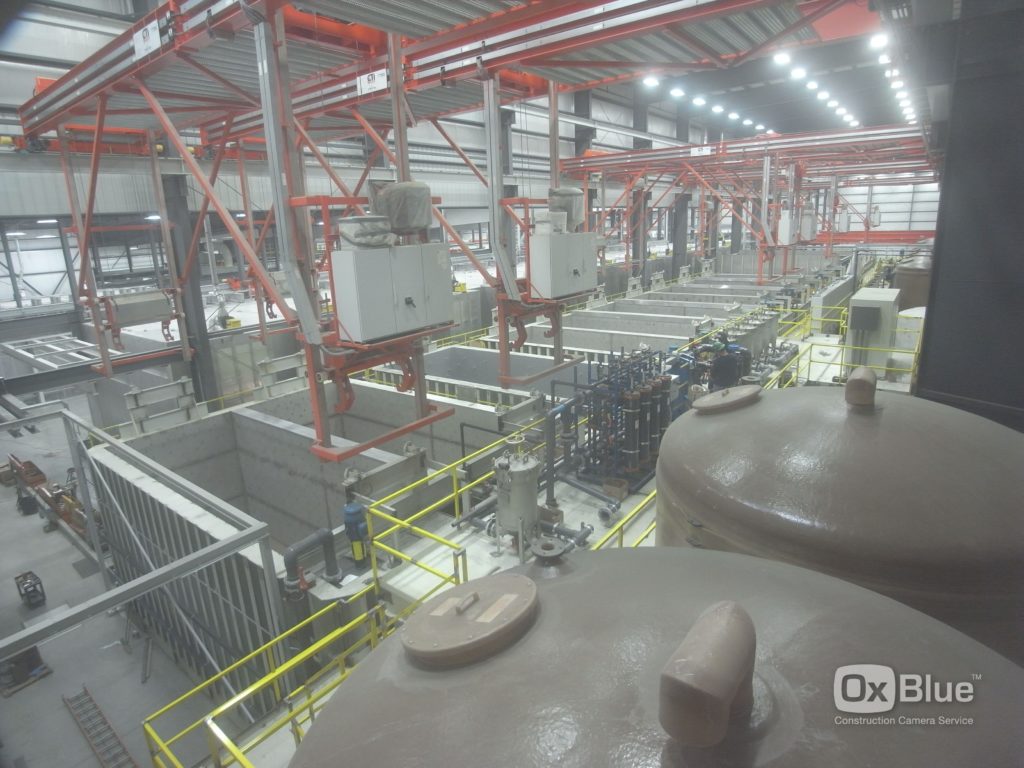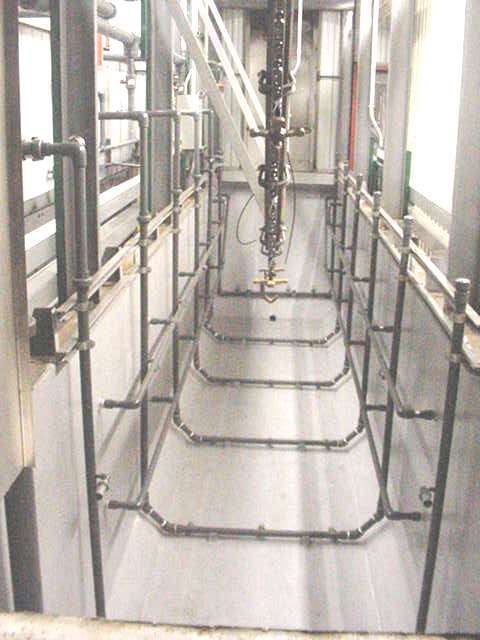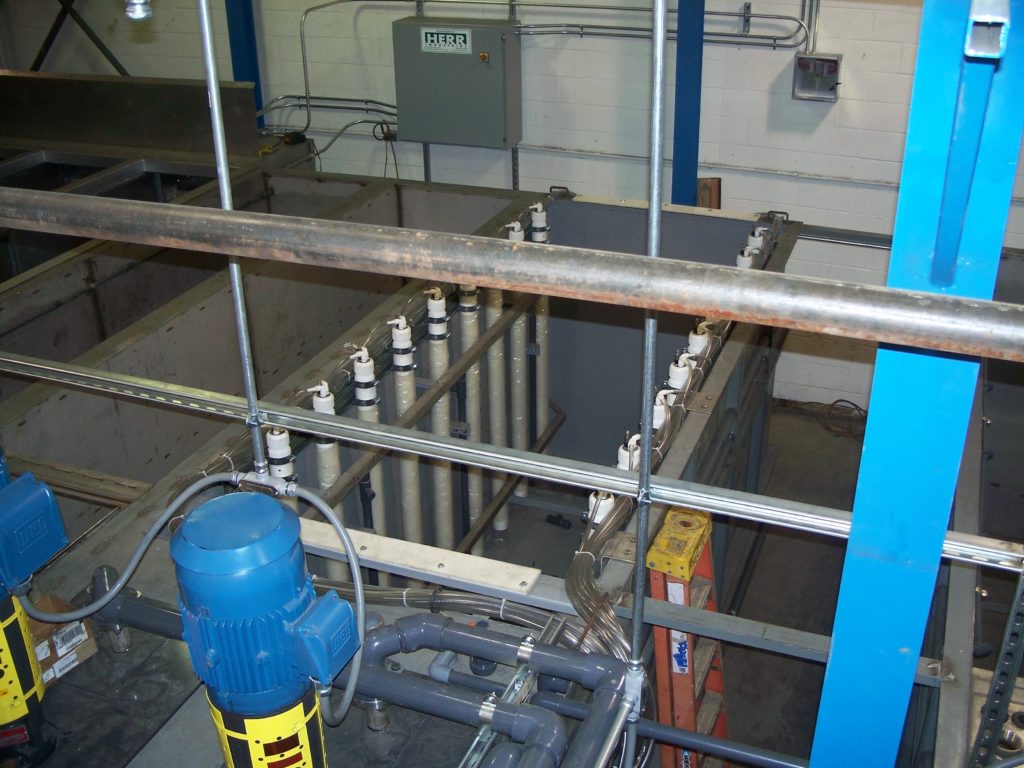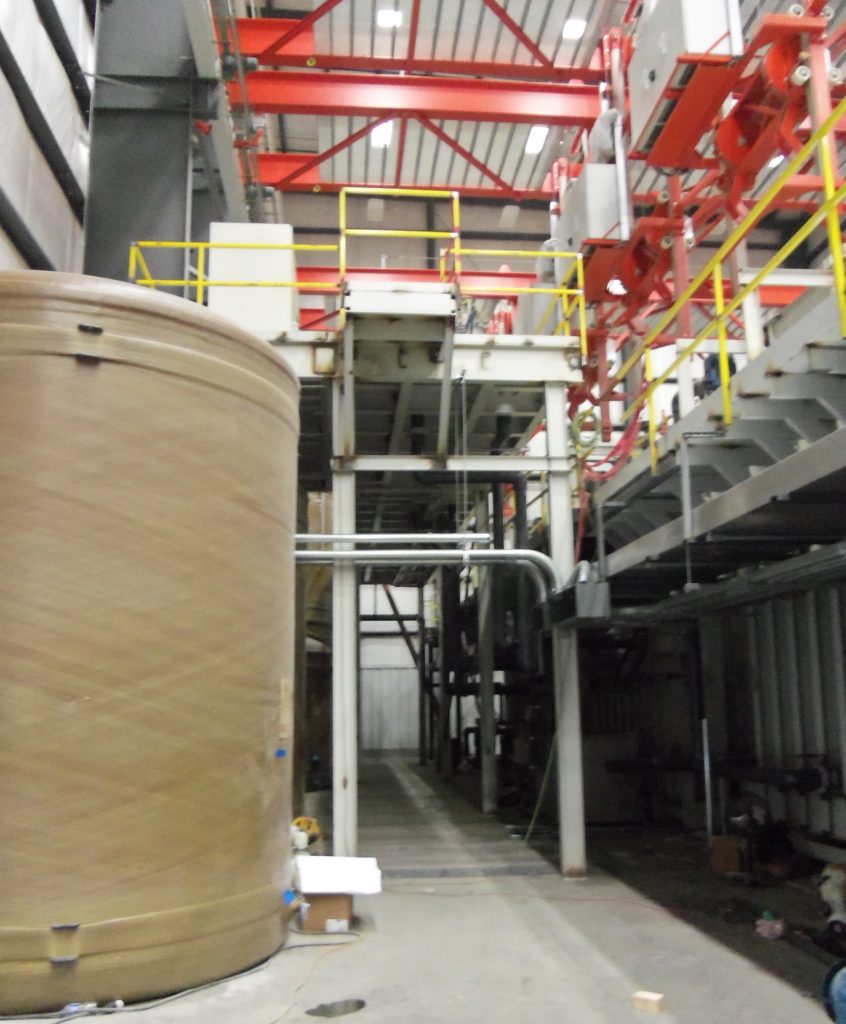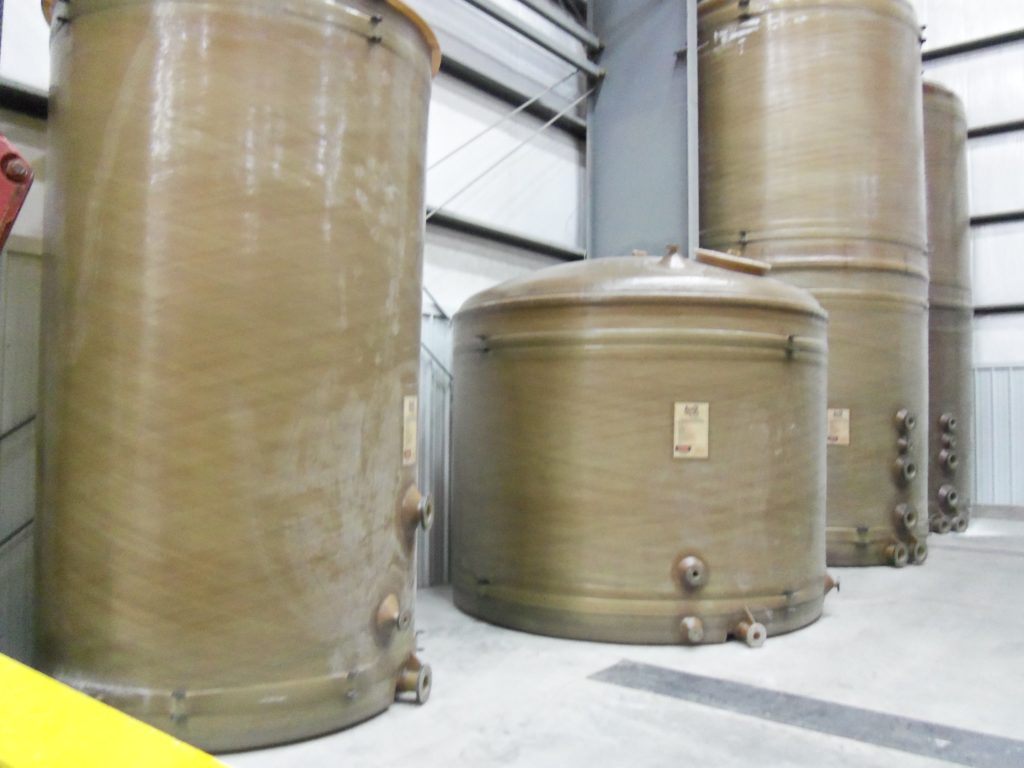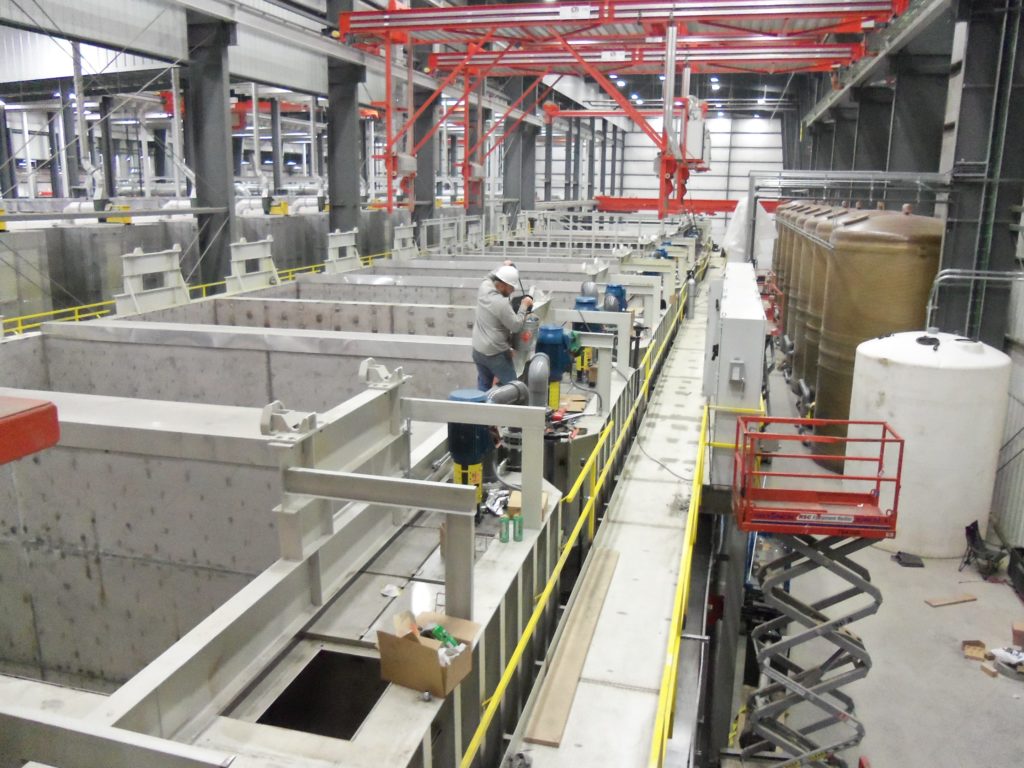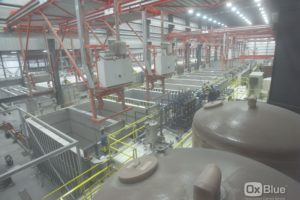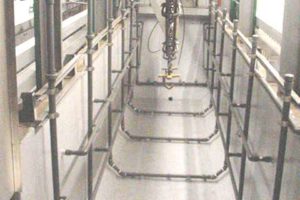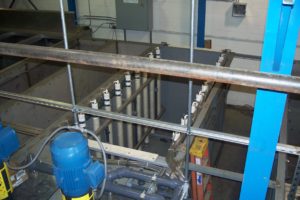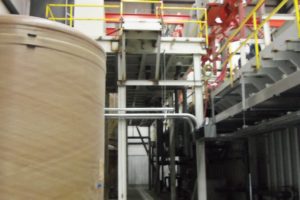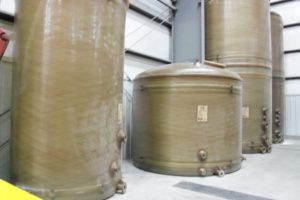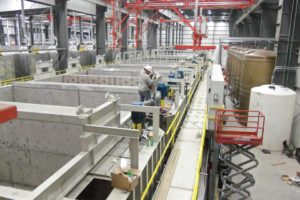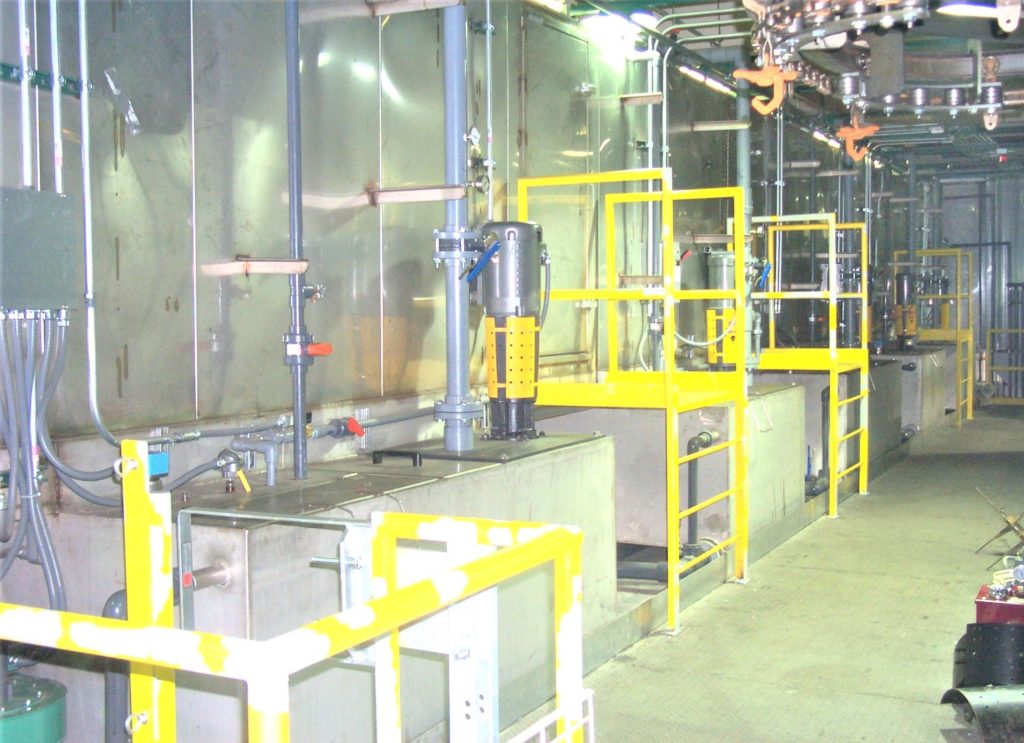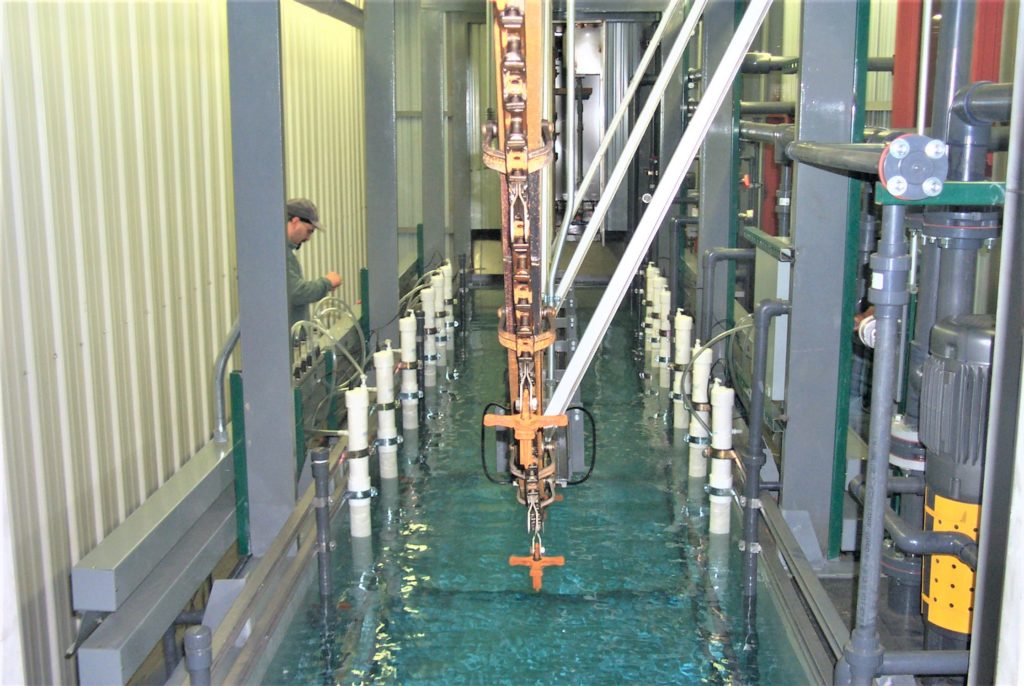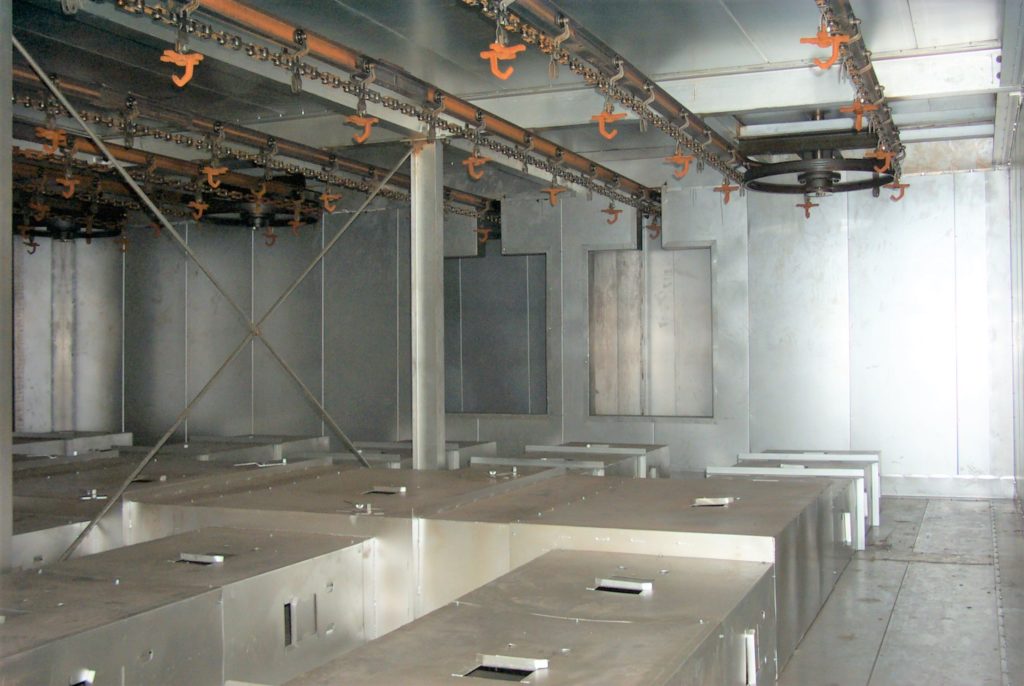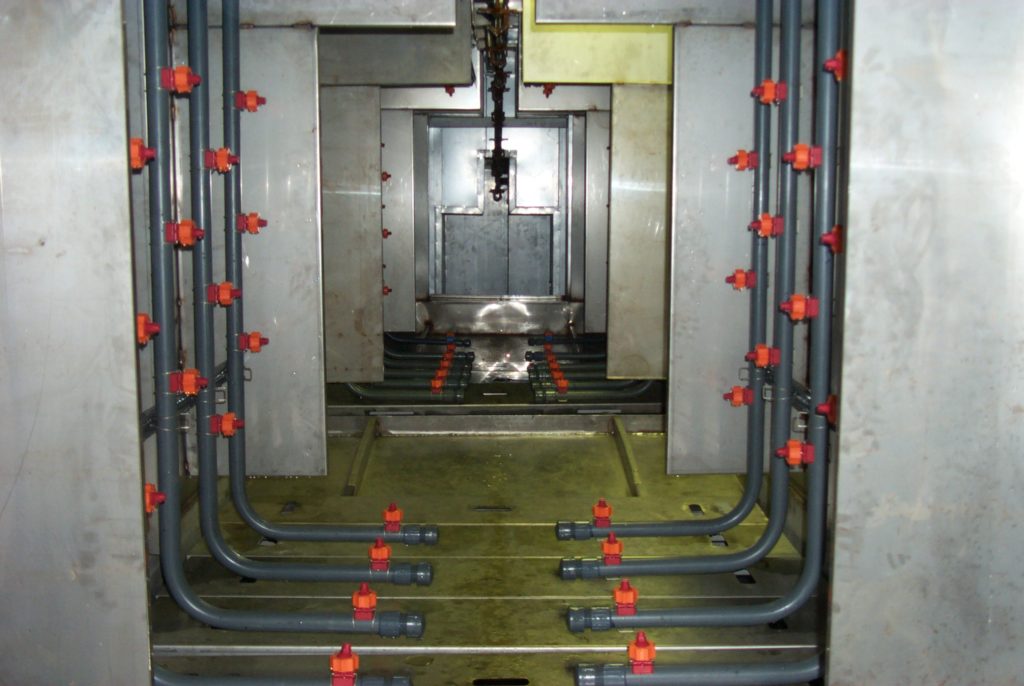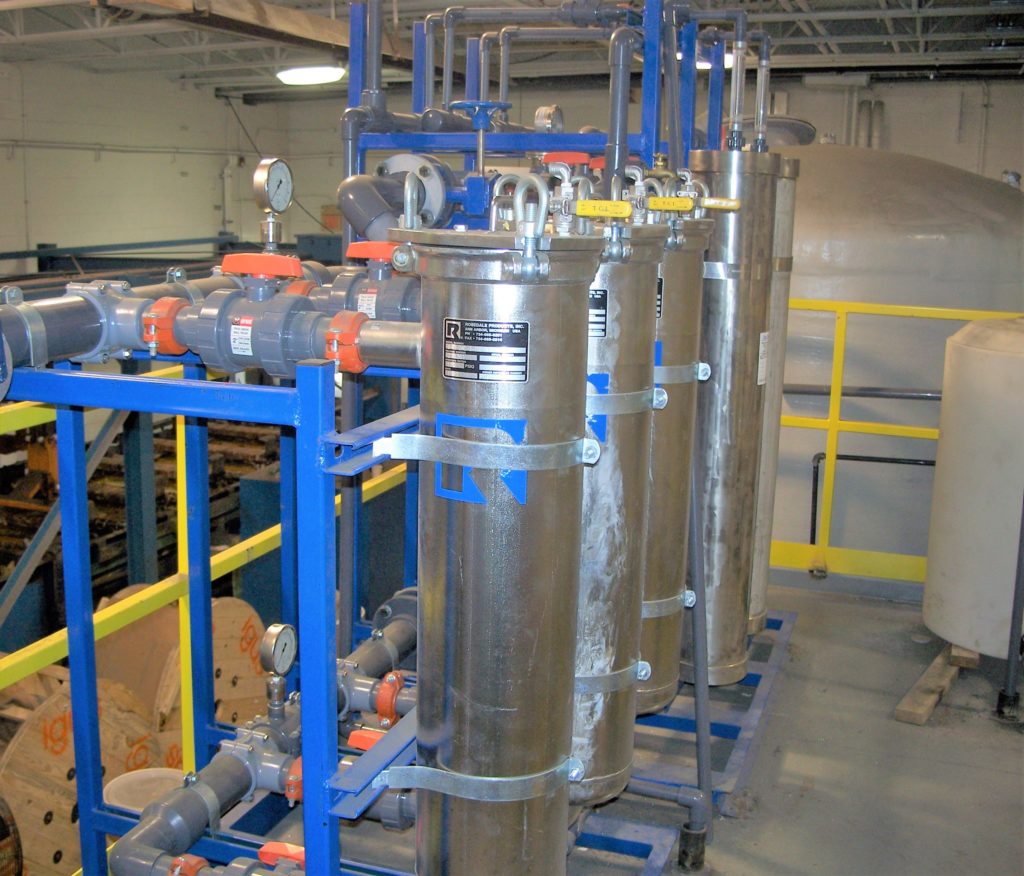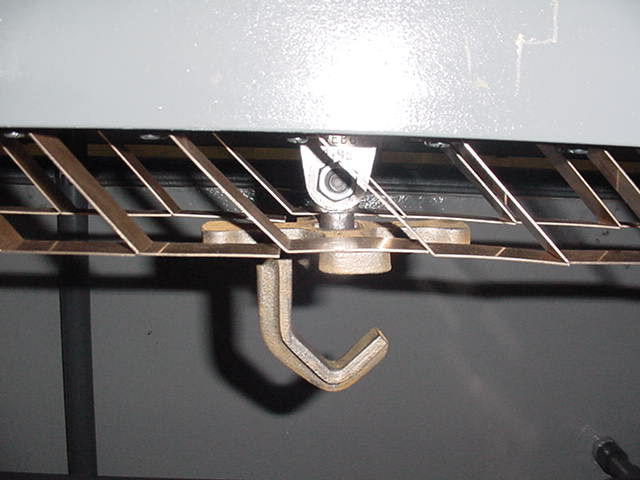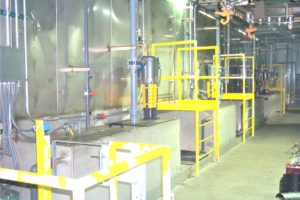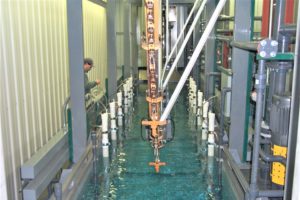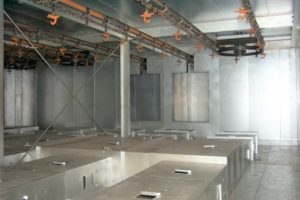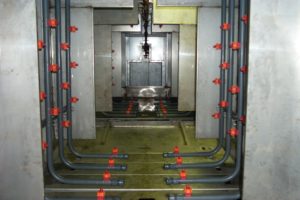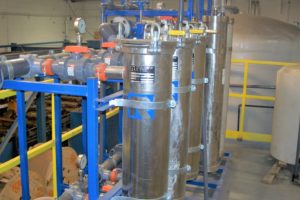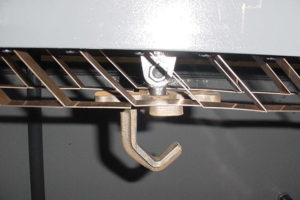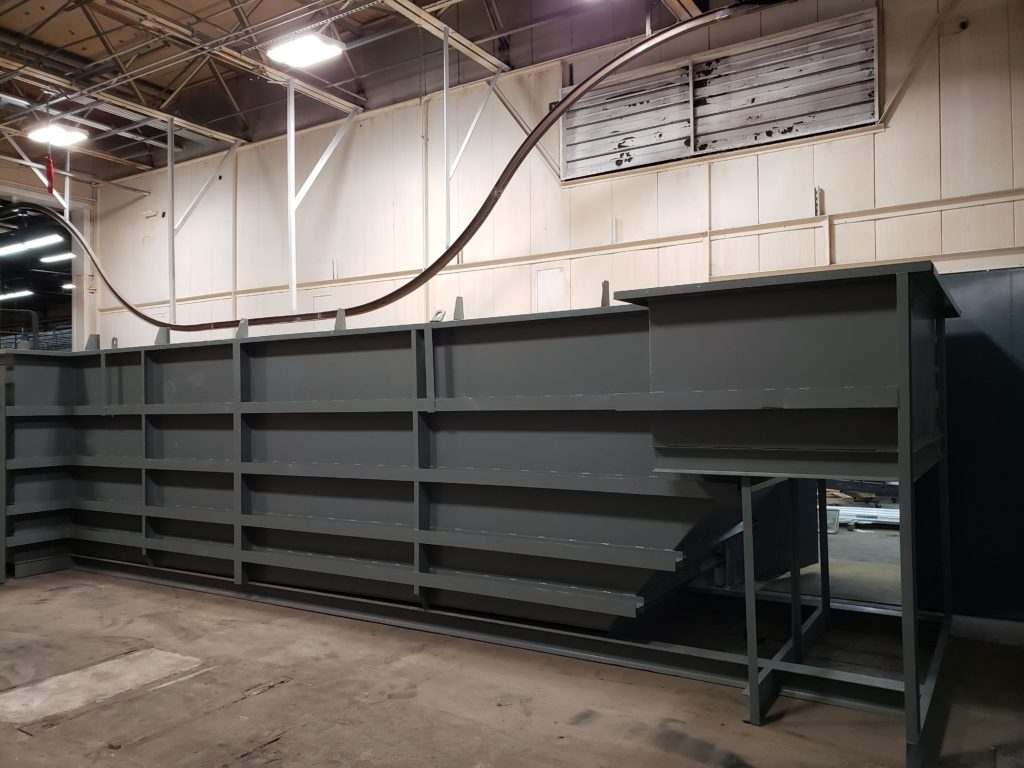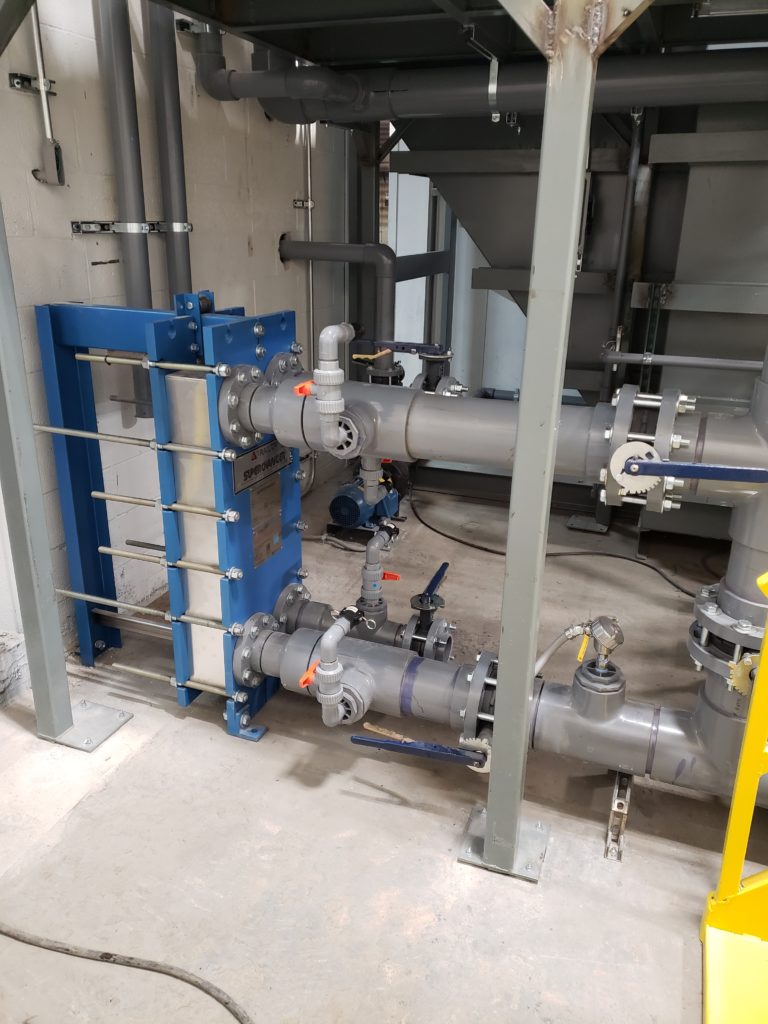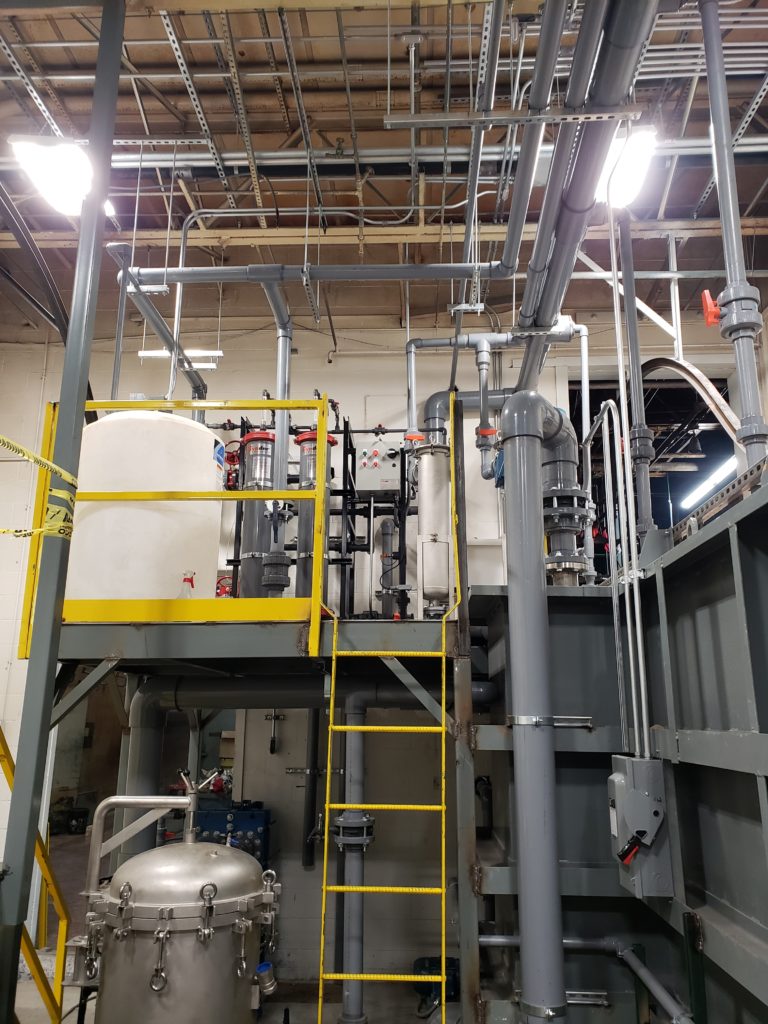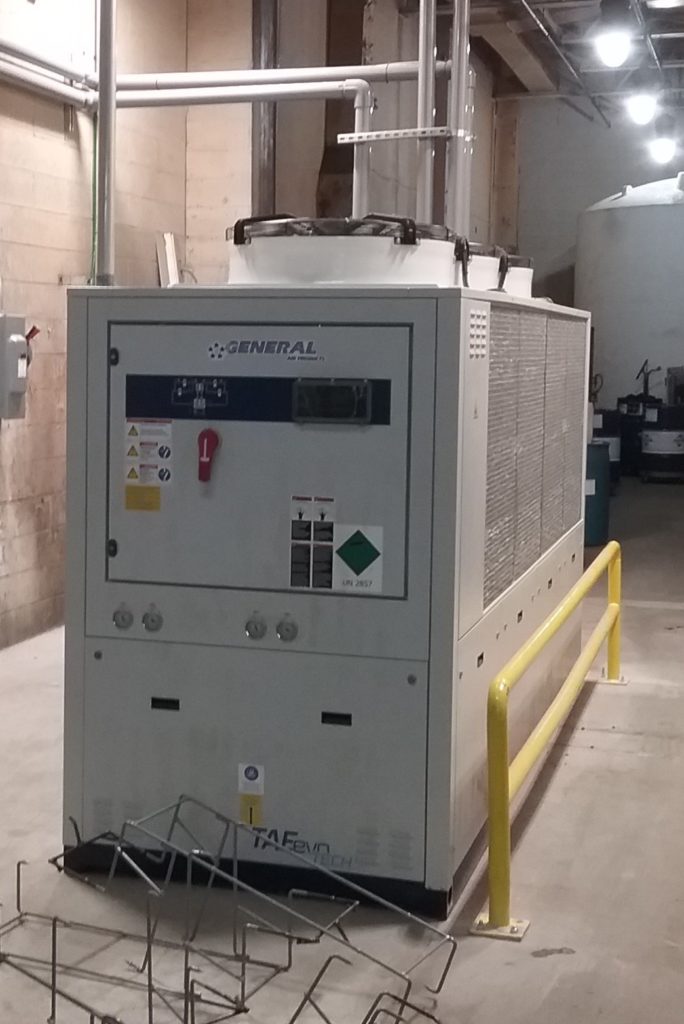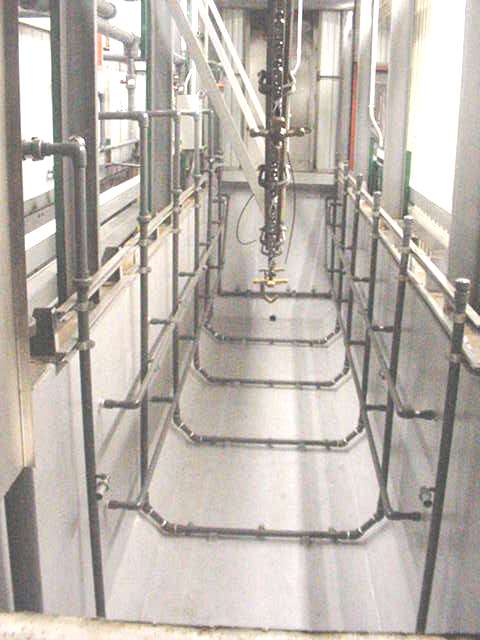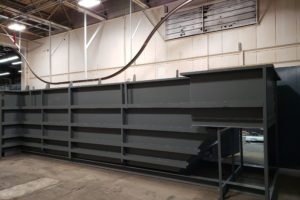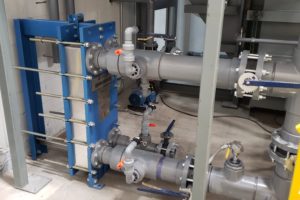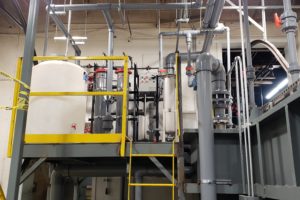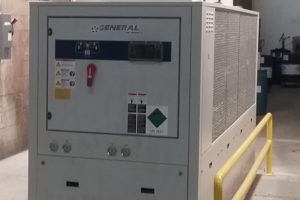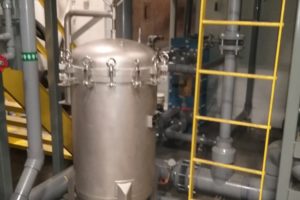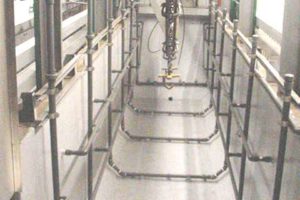ELECTROCOAT PROCESS
Two material handling approaches are generally used to transport parts through the e-coat process; 1) indexing and 2) continuous.
Indexing systems employ an overhead square transfer conveyor or programmable hoist(s) to vertically lift the parts in and out of a series of dip tanks matched closely to the maximum part size to minimize the paint volume. Because of the e-coat tank dwell time (typically 2 minutes) and time to move and lift the parts, these systems are generally limited to approximately 20 loads per hour. Square transfer is typically a lower cost than the programmable hoists but has limited process flexibility; all tanks are dipped for the same time and no tanks can be skipped.
Continuous type e-coat tanks are used for higher production rates and simply use vertical curves on a continuously moving overhead conveyor to dip the parts. The advantage of this type of tank is simplicity; the disadvantage is tank size; the faster the line speed, the larger the tank volume to achieve the dip time required
Surface preparation prior to e-coat is similar to other painting processes and ultimately based upon the paint performance required and compatibility with the e-coat to meet them. Although spray or dip washing can be used, dip cleaning the part could be required. Interior part surfaces that may not get clean with a spray wash may have residue that would eventually contaminate the paint tank. Unlike other coatings, e-coat does not have to be dried following surface preparation and travels directly from the washer to the e-coat tank.
When the part is dipped, the cathodic or anodic coating thickness migrates to the most conductive part surfaces first. As the film builds the resistance increases and shifts the coating build to other areas of the part resulting in a very even film build generally in the 0.5-1.2 mil thickness range. The electrical charge may diminish and inhibit coating inside tubes or deep recesses and should be tested.
E-coat paints are considered 98%+/- transfer efficient, i.e. very little paint is lost in the process. Excess paint residue remaining on the parts as they leave the tank is rinsed off with permeate (post rinses) and returned to the paint tank. Permeate is essentially water generated with an ultrafilter used to separate the paint into solids and liquid. The paint solids return to the paint tank and the liquid portion is used as the permeate rinse.
Maintaining the e-coat tank temperature may be required using a chiller and heat exchanger to remove heat imparted from the rectifier during the coating process. In some areas, heat is also required to keep the bath warm in the wintertime. Most e-coat baths are maintained between 80°F and 90°F; the temperature will be specified by the coating supplier.
After e-coat also require a thermal cure in the range of 300° to 375°F. Depending upon the specific coating, the ovens may be divided into two or three zones. The first zone is generally a lower temperature “dehydration” zone designed to remove excess moisture before “skinning” the paint. The second, and some cases, third zones provide a gradual higher temperature cure. Some e-coats tend to emit smoke when over a threshold temperature so the ovens must be properly ventilated and parts may need to be enclosed in a ventilated cooling tunnel after they exit the oven.



